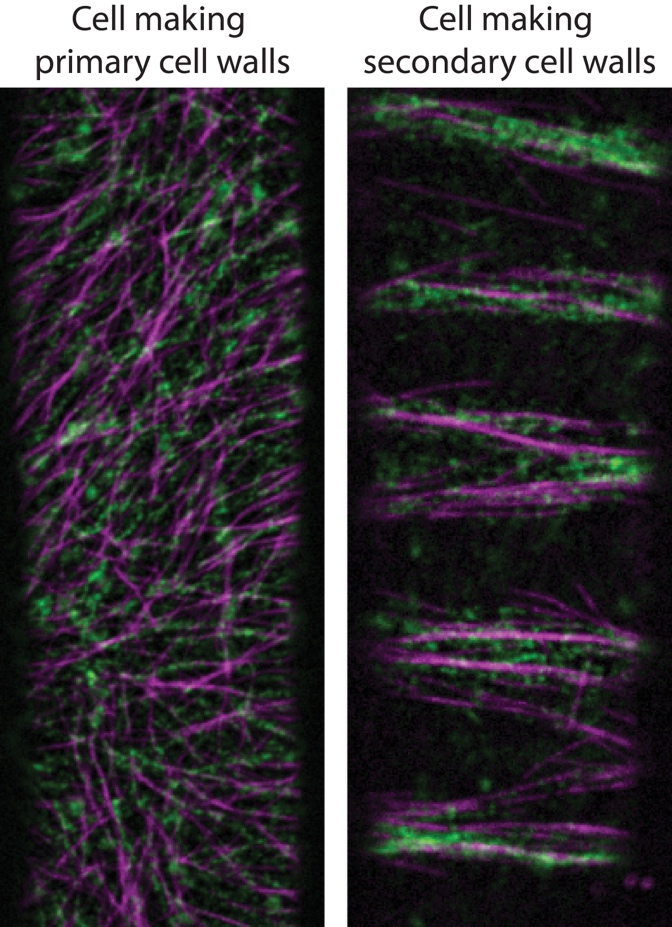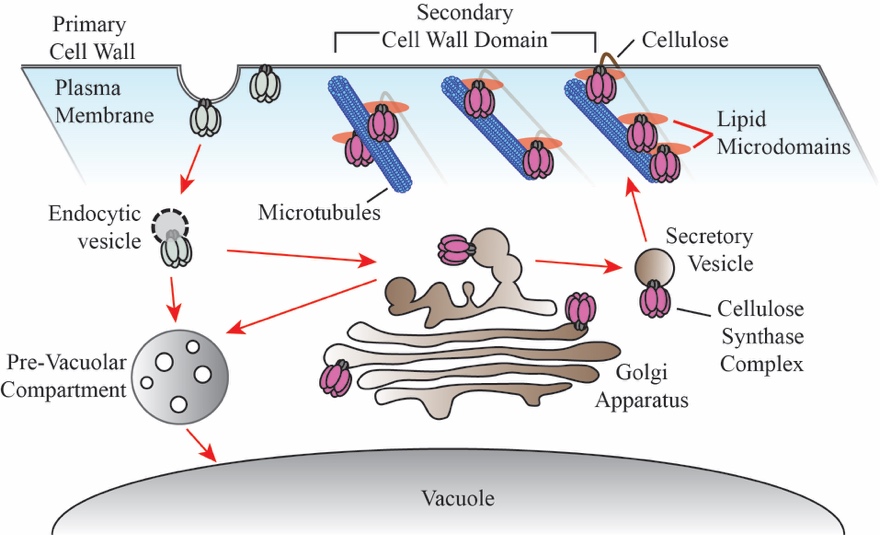Research
The lingo-cellulosic rich secondary cell walls found in the water conducting tissue and fiber cells of plants represent the majority of terrestrial biomass on earth and serve as the basis for many industries including wood, textiles, paper and more recently bio-fuel production. Physiologically, these secondary cell walls are important structural features that give plants their strength and rigidity and have allowed them to dominate the terrestrial environment.
Secondary cell walls are formed within the confines of the relatively elastic primary cell wall which is laid down during cell division and growth. After cell expansion ceases and secondary cell wall formation starts, the cell reorganizes its cellular machinery including its cell wall synthesizing enzymes to ensure the proper deposition of the secondary cell wall which is often laid down in specific patterns and organization depending on their physiological function. Our research aims to understand the cellular mechanisms that control the organizations, movements and locations of cell wall biosynthesis enzymes involved in secondary cell wall formation.

Cellulose Synthase Enzyme Trafficking
One of the main components of plant cell walls is the biopolymer, cellulose. In the lingo-cellulosic rich secondary cell walls, bundles of cellulose chains called microfibrils, are arranged in parallel and serve as the main load bearing component of the wall. These microfibrils are synthesized at the plasma membrane by large protein-complexes composed of several cellulose synthase enzymes (CESAs). Though only active at the plasma membrane, CESAs are also found dynamically trafficking within numerous intracellular compartments including Golgi apparatus and vesicles. How and why CESAs have such dynamic traffic patterns remains poorly understood especially during secondary cell wall synthesis. Our lab focuses on elucidating the cellular mechanisms controlling the organization and trafficking of CESAs to and from the plasma membrane and the various intracellular compartments. By furthering our understanding of how plants make and control cellulose production during secondary cell wall synthesis, avenues for engineering new lingo-cellulosic based materials can be opened.

The Role of Lipids During Secondary Cell Wall Formation
Though secondary cell walls are composed primarily of polysaccharides and lignin, lipids play an important role in the biosynthesis and organization of these components. In recent years, the importance of lipid organization and composition, especially in the plasma membrane, in cell wall synthesis has come to light. Specifically, losses of certain classes of lipids in certain lipid biosynthesis mutants, results in dramatic alterations in cell wall composition and structure. How this occurs and what the regular function of these lipids are however remains poorly elucidated. By using a combination of microscopy, biochemistry and molecular biology approach, our lab aims to put into context the roles of lipids during cell wall biogenesis.